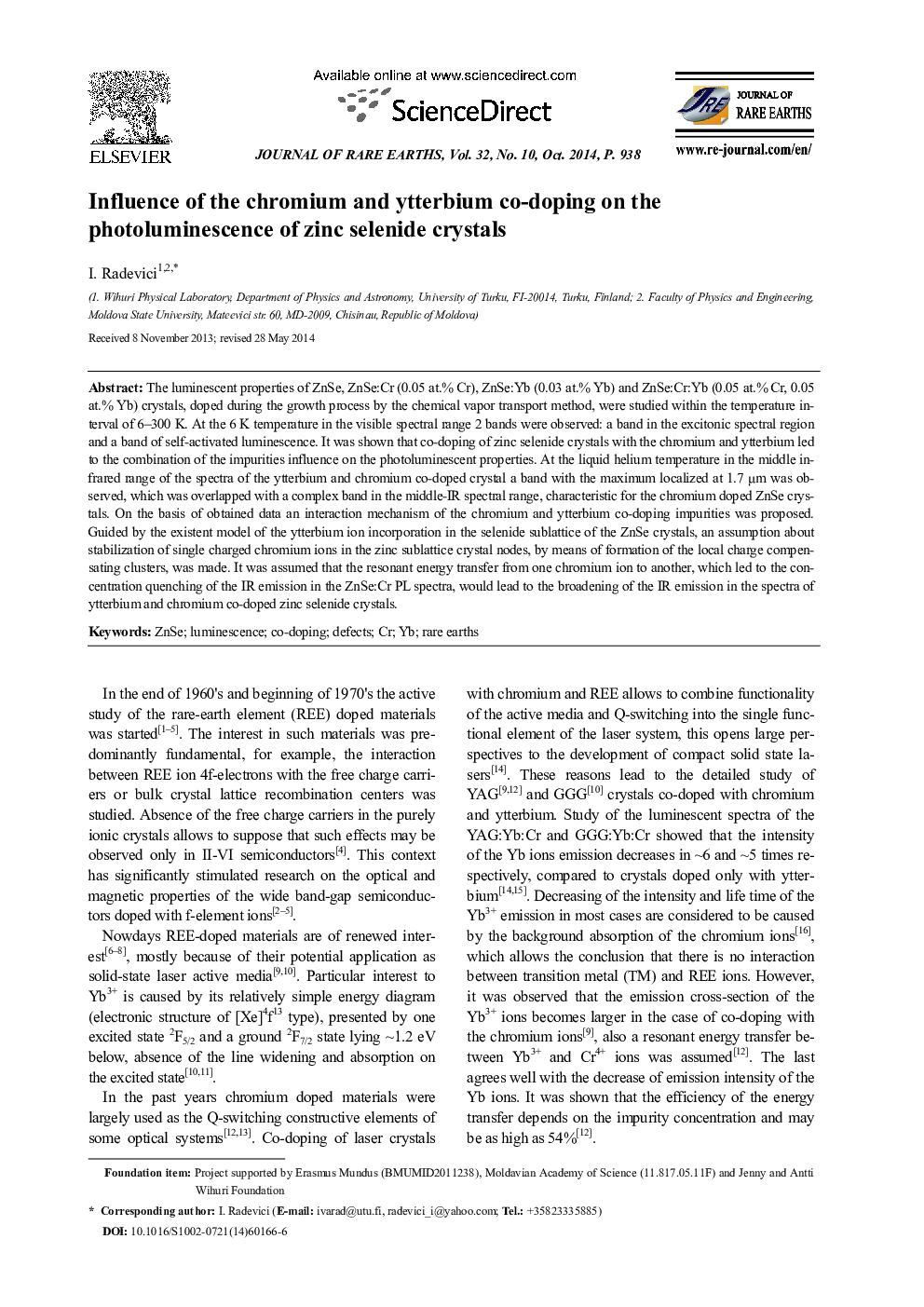| Article ID | Journal | Published Year | Pages | File Type |
|---|---|---|---|---|
| 1261923 | Journal of Rare Earths | 2014 | 8 Pages |
The luminescent properties of ZnSe, ZnSe:Cr (0.05 at.% Cr), ZnSe:Yb (0.03 at.% Yb) and ZnSe:Cr:Yb (0.05 at.% Cr, 0.05 at.% Yb) crystals, doped during the growth process by the chemical vapor transport method, were studied within the temperature interval of 6–300 K. At the 6 K temperature in the visible spectral range 2 bands were observed: a band in the excitonic spectral region and a band of self-activated luminescence. It was shown that co-doping of zinc selenide crystals with the chromium and ytterbium led to the combination of the impurities influence on the photoluminescent properties. At the liquid helium temperature in the middle infrared range of the spectra of the ytterbium and chromium co-doped crystal a band with the maximum localized at 1.7 μm was observed, which was overlapped with a complex band in the middle-IR spectral range, characteristic for the chromium doped ZnSe crystals. On the basis of obtained data an interaction mechanism of the chromium and ytterbium co-doping impurities was proposed. Guided by the existent model of the ytterbium ion incorporation in the selenide sublattice of the ZnSe crystals, an assumption about stabilization of single charged chromium ions in the zinc sublattice crystal nodes, by means of formation of the local charge compensating clusters, was made. It was assumed that the resonant energy transfer from one chromium ion to another, which led to the concentration quenching of the IR emission in the ZnSe:Cr PL spectra, would lead to the broadening of the IR emission in the spectra of ytterbium and chromium co-doped zinc selenide crystals.
Graphical AbstractFigure optionsDownload full-size imageDownload as PowerPoint slide
